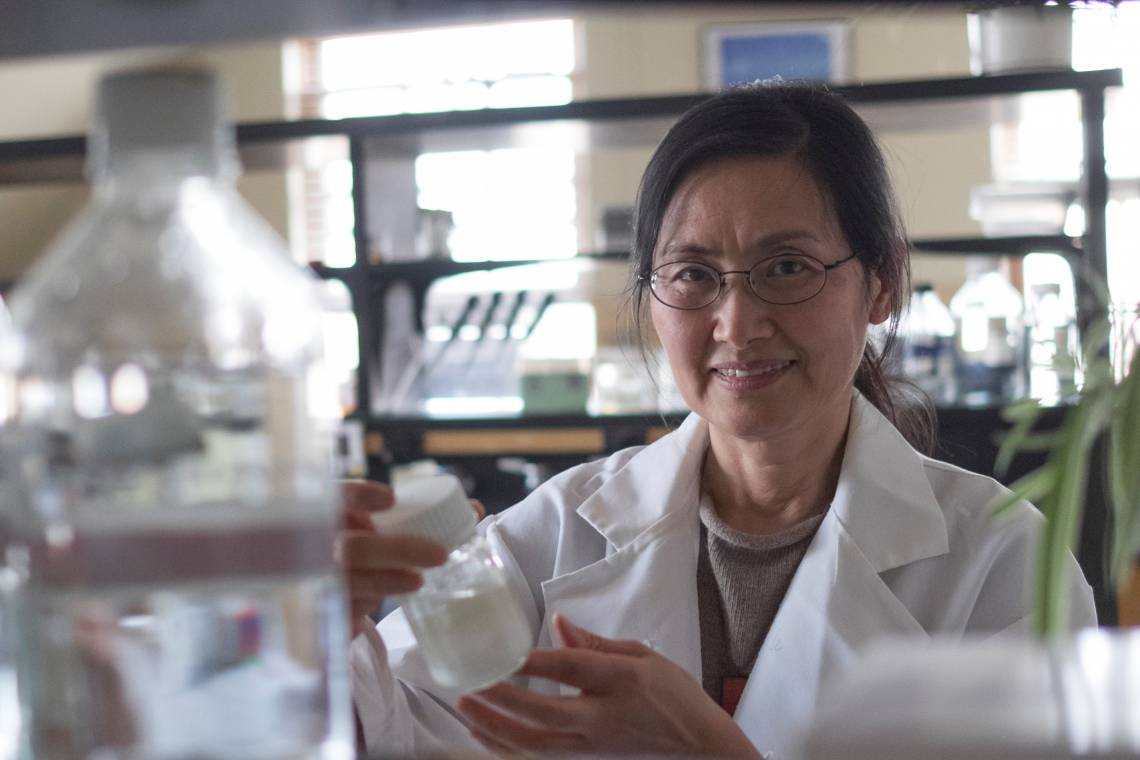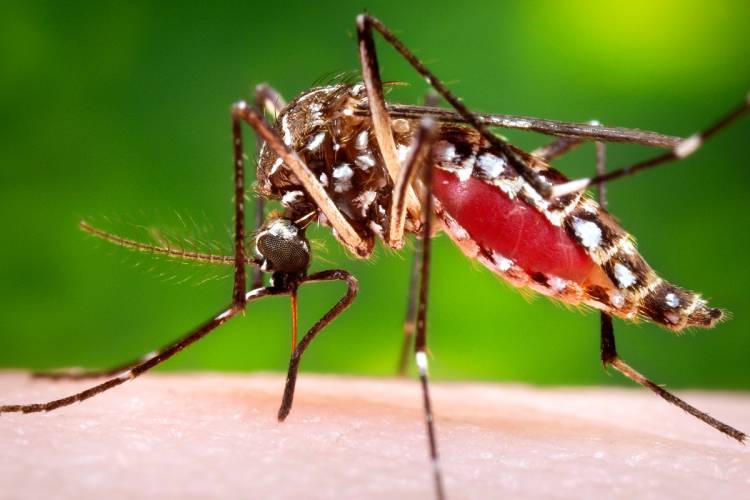Duke Welcomes Professor Ke Dong, Insect Neurotoxicologist
New hire has spent almost 30 years trying to outmaneuver insect pests

New Duke biology professor Ke Dong is drawn to creeping, crawling, swarming pests that make most people squirm: invincible cockroaches and blood-sucking mosquitoes. Rot-loving fruit flies and parasitic mites.
Her interests started early, while growing up on the campus of a silkworm research institute in southeastern China where her mother worked as a chemist.
As a child, Dong didn’t have the standard childhood pets. Instead of a cat, or a dog, she raised caterpillars.
The institute where her mother worked grew row upon row of mulberry bushes to feed its hungry silkworms, which gorge on the tender leaves before spinning their silken cocoons. “My playground was a mulberry field,” Dong said.
She went on to earn a master’s degree in entomology at Zhejiang University in 1986. By then her husband-to-be, Sheng-Yang He, a plant biologist and also a new hire at Duke, had moved to the United States to pursue a Ph.D. She received similar offers, so as soon as she could arrange a passport she jumped at the opportunity.
“The world just opened for us,” Dong said.
Since then, Dong has spent her career trying to understand how insects develop defenses to our chemical arsenal. And now she is bringing her expertise to Duke, as part of a targeted recruitment effort supported by the Duke Endowment to advance faculty hiring in the sciences.
When Dong started her career in insecticide research in the late 1980s, scientists were reporting a worrisome trend. In a pattern that was becoming all too familiar, insect pests were mutating to thwart our most effective chemical weapons.
Mosquitoes, ticks and cockroaches that had already developed resistance to the powerful pesticide DDT that was banned in the 1970s were rapidly becoming immune to a newer class of compounds, called pyrethroids, which had been heralded as DDT’s safer successors.
Natural versions of these compounds, extracted from dried chrysanthemum flowers, had been used for centuries in China and Europe for their ability to stupefy and kill insects.
Since the first synthetic pyrethroids were introduced in the 1970s, they’d been put into hundreds of products ranging from lice shampoos to termite treatments. More than 170 million acres of cotton and other crops -- an area roughly the size of Texas -- were sprayed with them in 1987 alone.
However, after just a few years of widespread use, insects had started developing their own defenses. Reports that the chemicals were losing their punch were on the rise.
The first cases of pyrethroid resistance were discovered in house flies. By the 1980s, reports of resistance rose to more than two dozen insect species, some of which could withstand doses several thousand times higher than “normal” strains.
These survivors mated with each other and passed their resistance capabilities to their offspring. With each new generation, efforts to eradicate them actually made them stronger, sparking renewed fears that insect-borne diseases such as malaria, dengue and yellow fever could get out of control.
As a Ph.D. student at Cornell University, Dong studied German cockroaches that were becoming almost impossible to kill with standard bug sprays.
She was among the first to show that what protected the resistant roaches were mutations in the insects’ genetic code that altered the pesticide’s molecular target.
Pyrethroids work by binding to and forcing open tiny pores in nerve cell walls, called sodium channels, which function as gateways to the cell. The result: the nervous system gets overstimulated, and eventually the insect is rendered motionless and dies.
Dong identified multiple genetic mutations that made the roaches’ nerve cells less sensitive to the chemicals’ toxic effects, turning them from vulnerable to resistant. She was able to introduce the mutation into frog eggs, and suddenly they were able to survive the toxins, too.
Dong’s early work on cockroaches required her to dissect out their nerve tissue each day. After repeated exposure she was overcome with red, puffy eyes and blurred vision brought on by an allergy to her own research specimens.
“It was very scary,” Dong said.
Being allergic to cockroaches pretty much crossed them off the list, so when Dong moved to her first full-fledged faculty position in 1995, at Michigan State University, she soon switched to other species, including fruit flies, mosquitoes, bumble bees, planthoppers and invasive varroa mites, which threaten to wipe out honey bees
Over the next 25 years she would continue to study insect ion channels and receptors and how they react to chemicals, in the hopes of finding targets for safer, more selective insecticides, or prolonging the useful lives of the ones we have.
Today, pyrethroids are still used as relatively benign chemicals in thousands of products to prevent insects from taking over homes, lawns, crops and gardens -- from mosquito repellents and “bug bombs” to pet shampoos for fleas and ticks. One of the only insecticide classes approved for treating mosquito bed nets, pyrethroids remain a cornerstone in the global fight against malaria.
In her first years at Duke, Dong plans to study one of their properties that isn’t well understood. These insecticides don’t just kill insects such as mosquitoes, they also keep them away, reducing the number that enter people’s homes. But how that deterrence works is a mystery.
In a new direction for her lab, Dong is trying to figure out whether insects are able to smell the chemicals wafting off mosquito nets or smouldering candles from afar, or if they have to land on them first before being driven away, and whether sodium channels are involved.
She’s also collaborating with structural biologists to see how pesticides and insect proteins interact at the atomic level, using a technique called cryo–electron microscopy to zoom in on the sites of action and capture the fine details in 3-D.

For her more than two decades of outstanding contributions to the field of molecular insecticide toxicology, Dong was awarded the American Chemical Society’s 2020 Award for Innovation in Chemistry of Agriculture. She has also received more than $10 million of federal funding from the U.S. National Institutes of Health, the U.S. National Science Foundation, and the U.S. Department of Agriculture.
When she’s not in the lab, Dong enjoys cooking, bird-watching, hiking and travel. Her son Cody is now out of the house and pursuing an MD-PhD at the University of Chicago.
After 25 years of accumulating side projects and other commitments at Michigan State, Dong says this next step in her career is an opportunity to start fresh with renewed focus. She's specifically interested in disarming ion channels and smell receptors in mosquitoes to reduce the spread of diseases like malaria.
In her new lab at Duke, for the first time she’ll have a dedicated space where she can breed mosquitoes.
“Basically a little mosquito empire,” Dong said. “I’m excited.”